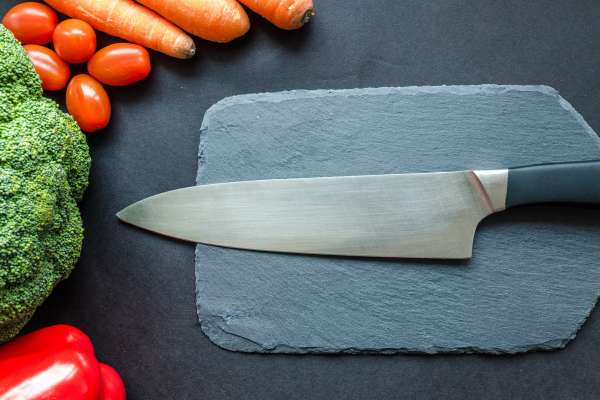Cleaning a knife properly is crucial not only for its longevity but also for ensuring safe and efficient use in the kitchen. Knowing how to clean a knife can prevent rust, maintain sharpness, and minimize the risk of contamination while preparing food. Whether you’re using a chef’s knife, paring knife, or serrated blade, the process involves simple yet essential steps that anyone can master. By understanding the importance of cleanliness in kitchen tools and adopting the right techniques, you can keep your knives in excellent condition, enhancing both their performance and your cooking experience.
How Often Should I Clean My Knife?

It is important to clean your knife after each use to prevent the buildup of bacteria and food residue. This will help maintain the sharpness of the blade and ensure safe food preparation. A quick rinse with warm soapy water and drying immediately after use is usually sufficient for daily cleaning.
Can I Use Abrasive Cleaners On My Knife?

It is generally not recommended to use abrasive cleaners on knives as they can damage the blade and affect its sharpness. Abrasive cleaners can scratch the surface of the knife, leading to potential corrosion and reducing its overall lifespan. Instead, it is best to use mild soap and warm water to clean your knife, followed by drying it thoroughly with a soft cloth.
Step-By-Step Guide To Cleaning Your Knife

1. Initial Rinse
Begin by rinsing the knife under warm running water to remove any visible food particles and debris. This initial rinse helps prevent residue from drying on the blade, making subsequent cleaning easier and more effective.
2. Washing The Blade
Use a mild dish soap and a soft sponge or cloth to wash the blade gently. Avoid harsh scrubbing or abrasive materials that can damage the blade’s finish or sharp edge. Pay special attention to the area near the handle and along the cutting edge where food particles tend to accumulate.
3. Handling The Handle
Clean the handle of the knife thoroughly with soap and water to remove any grease or residue. If the handle is made of wood or other porous material, avoid prolonged exposure to water to prevent warping or damage. Use a separate cloth or sponge to clean the handle and dry it promptly after washing.
Understanding Knife Anatomy
Understanding the anatomy of a knife is essential when learning how to clean it effectively. Knives typically consist of a blade, handle, bolster, and tang. The blade, where most of the cleaning attention is focused, should be rinsed immediately after use to prevent food particles from drying and sticking. Pay attention to the handle and bolster as well, ensuring no food residue is left in crevices that could harbor bacteria. By understanding these components, you can clean each part thoroughly, prolonging the knife’s lifespan and maintaining its functionality.
Drying Your Knife
Drying your knife properly after cleaning is crucial to prevent rusting and corrosion. Use a clean, dry cloth to wipe the blade and handle immediately after washing. Ensure all moisture is removed, especially from the blade’s edge and the junction between the blade and handle. Proper drying also prevents water spots, which can affect the knife’s appearance and potentially lead to rust over time. By incorporating this step into your knife cleaning routine, you ensure that your knives remain in optimal condition for longer periods, ready for safe and effective use whenever needed.
Sharpening Your Knife
Sharpening your knife isn’t just about maintaining its blade, it’s about honing a tool that can be versatile in unexpected ways. One such skill that may surprise you is using a sharp knife to pick a lock. While this may sound like something out of a spy movie, it is indeed possible with the right technique and precision. By understanding the mechanics of a lock and utilizing the fine point of a well-sharpened blade, you can potentially unlock doors in emergency situations or impress friends with your unconventional locksmith skills.
Using The Dishwasher
Using the dishwasher to clean knives is a convenient option but requires caution. While many knives are dishwasher-safe, frequent exposure to harsh detergents and high heat can damage the blade’s edge and handle materials over time. To minimize this risk, it’s advisable to place knives in the dishwasher with the blade facing downward to avoid contact with other utensils and ensure they are thoroughly dried after the cycle to prevent water spots and rust.
Avoiding Clutter
Avoiding clutter around the sink and countertop is crucial when cleaning knives. A cluttered workspace can increase the risk of accidents and make it challenging to handle knives safely. Always clear the area around the sink before washing knives to prevent them from slipping or falling onto the floor. Additionally, keeping knives organized and stored properly when not in use reduces the likelihood of damage and maintains their sharpness longer. By following these practices, you can ensure that cleaning knives is efficient and safe, enhancing both their lifespan and your kitchen hygiene.
The Final Thought
Keeping your knife clean is essential for maintaining its sharpness and longevity. Regular cleaning and proper storage can prevent rust and corrosion, ensuring your knife stays in top condition. By following the steps outlined in this article, you can easily and effectively clean your knife with minimal effort. Remember to always exercise caution when handling sharp objects and use appropriate cleaning materials. Take the time to care for your knife properly, and it will serve you well for years to come. Start implementing these cleaning tips today for a sharp and pristine knife every time you use it.

